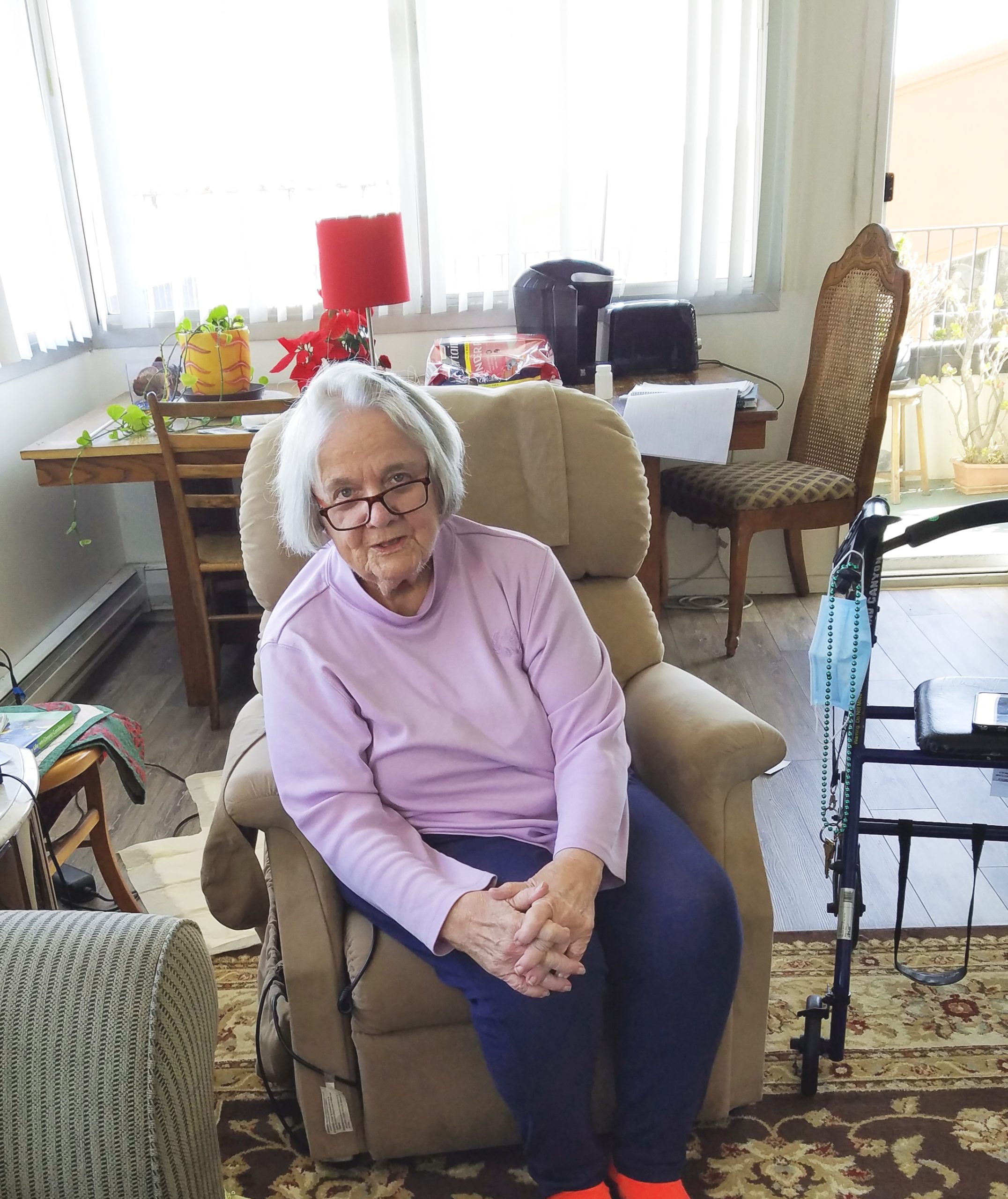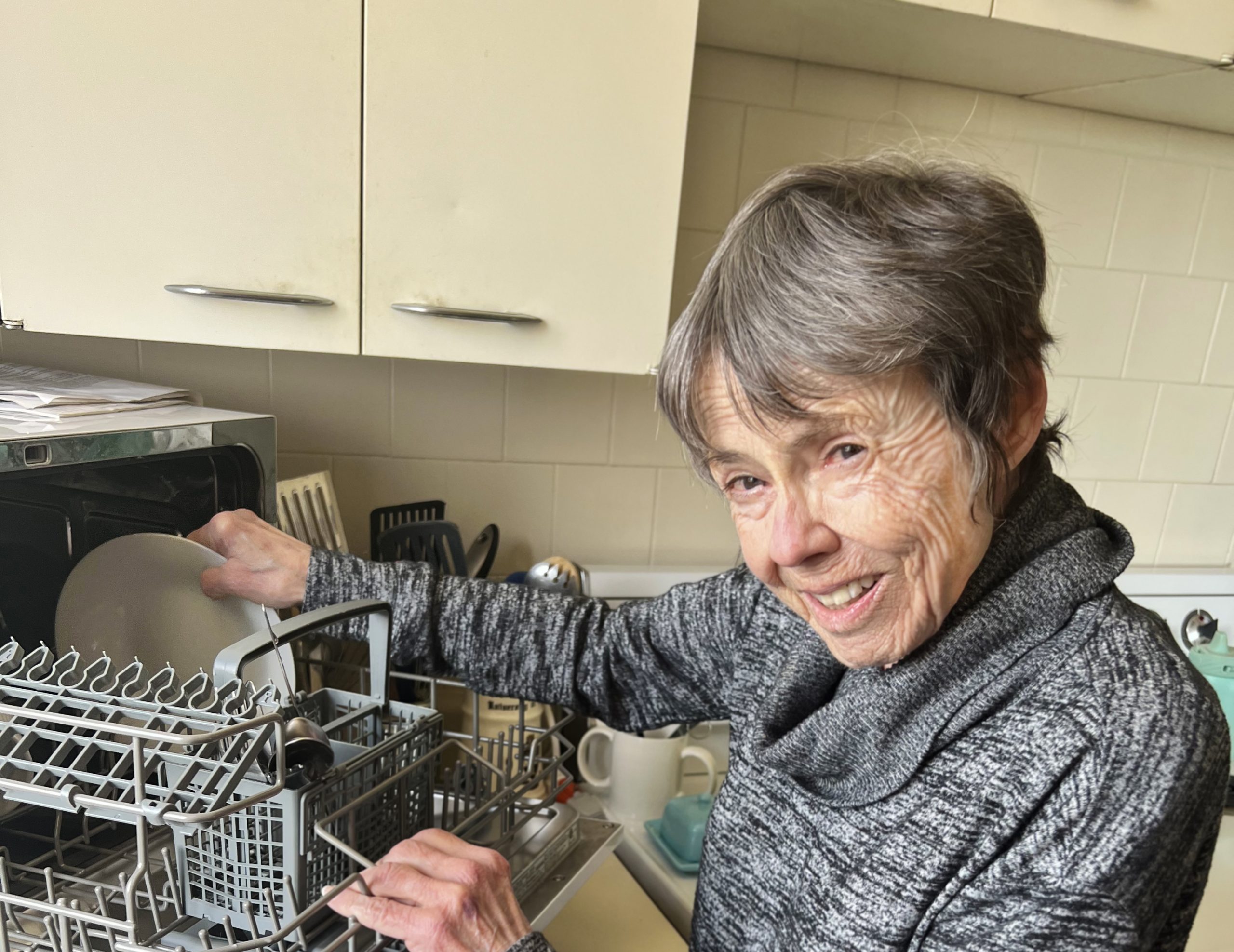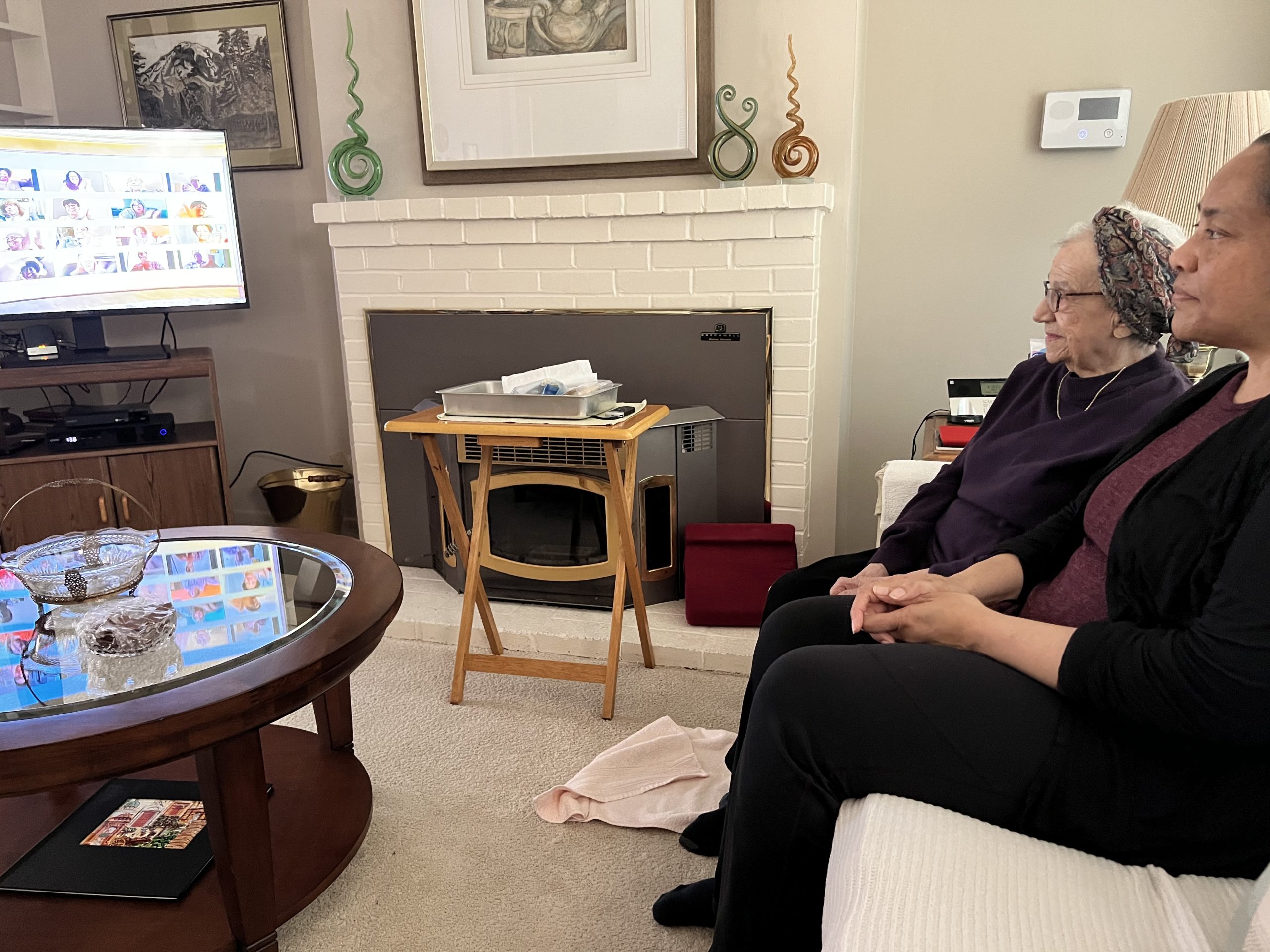Neighborhood and ‘village’ networks provide mutual support for seniors as aging makes daily tasks more difficult
Despite bad knees and respiratory problems that take her “forever to do things,” Jay Duchene admits, she is “not good at asking for help.” The retired nurse, now 86, has asked neighbors for an occasional ride, but trips to the doctors wait until one of her three daughters – two on the East Coast and one in Washington state – visit San Francisco.
“I’m not maudlin or depressed, it is what it is,” said Duchene, a retired psychiatric nurse who lives on Russian Hill. “I know enough not to slip down so far that it would hurt my children.”
Eighteen months after retiring, Glenda Hope, 85, invited some other seniors in her Cayuga neighborhood over for an evening of games. A recently retired widow without family, the Rev. Hope knew she needed to create an intentional family, a community of caring. “I had no one. No family. My friends were younger and still working and didn’t live in the south-central neighborhood. I was afraid I’d be isolated and lonely.”

Whereas globally, living in extended-family households is the most common arrangement, in the United States, nearly a third of adults 60 and older live alone, according to a 2020 Pew Research study. That would have amounted to about 54,000 people in San Francisco that year, calculated from census data. That includes people who have no living relatives or those who live far away or are out of touch.
Seniors with substantial means can hire private home care aides, who offer companionship, cook, clean, attend to personal needs and do errands like shopping for food or picking up prescriptions. In San Francisco, low-income adults 65 or older or disabled or blind can get help through the city’s In-Home Supportive Services program. Medicare, the federal health program for people 65 and older only cover post-hospital medical care. Medicaid (Medi-Cal in California) pays for non-medical (personal) continuing care, but only for those under the poverty level.
The rest – middle-income seniors “aging solo” – have few options. There are few programs that provide subsidies, but most have waiting lists. So enterprising seniors, some with the support of nonprofits like the San Francisco Community Living campaign’s Community Connectors, are forming arrangements with friends, friendly neighbors or members of their church.
It’s our ministry
“We bring the groceries and meals into the house for seniors and people with disabilities, and we find out how they are doing,” said Alicia Jackson. She and Ed Monroe are two of six volunteers for Grace Tabernacle Community Church in the Bayview District, one of 21 churches in the African American Faith-Based Coalition.
But that’s not all they do. When one of their seniors, who had suffered a stroke, complained her building wasn’t being kept clean, Monroe whipped out his camera and took photos to document the issue. “This is our ministry,” Jackson said. “It’s the highlight of our day.”
Others have established more formal neighborhood networks, like the Community Connectors or Village programs.
Community Connectors supports neighbors in establishing and coordinating a range of local activities and outreach for seniors and people with disabilities, from exercise classes and walking groups to potlucks and volunteer projects. There are Connector programs in the Cayuga, Inner Sunset, Merced Extension Triangle, Midtown Terrace, Miraloma Park, Sunnyside, Crocker Amazon, Potrero Hill, Western Addition and Sunset-Parkside neighborhoods.
Some seniors join paid membership cooperatives like the “villages,” inspired by Boston neighbors who in 2002 originated the concept for mutual support as they aged. Today there are 350 such groups across the globe and three in San Francisco: San Francisco Village in the western part of the city, NEXT Village SF in the city’s northeast, and Golden Gate Village in the Richmond District. Some, like Boston’s Beacon Hill Village, SF Village and NEXT Village, hire staff. Others rely solely on volunteers and networking.
Someone for the kids to call
Duchene’s daughters got her to join NEXT Village SF. “I needed someone local they could call if they were concerned.” The Village paired her with Teddy Kramer, a young entrepreneur and small business chair for the Russian Hill Neighborhood Association.
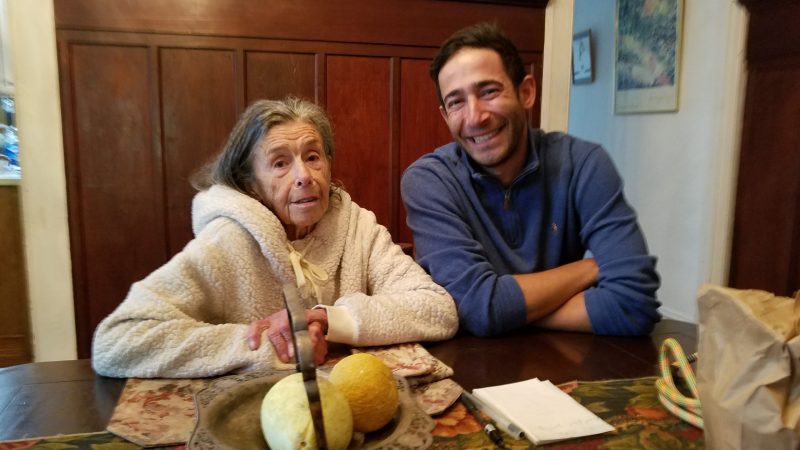
During the height of the pandemic, when seniors were told not to leave their home, Kramer delivered groceries and ran small errands for his neighbors three to four days a week. “I don’t just deliver; I help unpack groceries and put them away,” he said. “It’s about being thoughtful.” When the closest vaccination site Duchene could find was in Santa Rosa, Kramer, who doesn’t own a car, borrowed one, and drove her there.
The help went both ways. Kramer needed an apartment and Duchene knew the landlord in the next building was looking for a new tenant. Now they’re neighbors as well as friends. He loves his apartment,” Duchene said, and her daughters are happy. “They’re on his fast dial.”
Linda, who asked that her last name be withheld for safety concerns, joined the San Francisco Village this year, when she turned 73. “I managed long-term care for my parents on the East Coast, and it wasn’t easy,” she said. “I’m a solo ager; I thought it was important to find a support system before I was in crisis.”
So far, she’s only needed help changing the battery in her smoke detector. But she knows the time will come when she needs more. Meanwhile she volunteers, calling on a fellow member who uses a walker and doesn’t get out often.
More than a game
Hope recognized she’d need more than a friendly game with neighbors to continue living in her home as she got older. While most of Cayuga’s seniors are longtime residents, there has been an influx of newcomers. Retirement, for many, found them surrounded by neighbors they didn’t know well enough to call on for help.
Out walking one day, she ran into neighbor Chris Dillon, a retired hospital administrator who had been following the villages “aging in place” movement. “What are WE going to do?” she asked her.
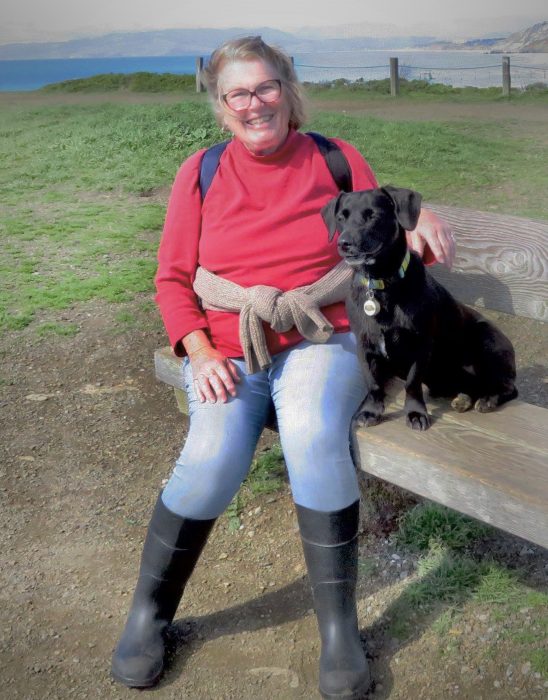
A village program didn’t seem right at the time. Beacon Hill and her neighborhood are very different, the former a wealthy community of generations of families. “The first thing they did was hire a case manager,” said Dillon. “They saw their aging-at-home community more as an insurance policy.”
Hiring a case manager seemed overkill for this nascent effort by the largely middle-class Cayuga community.
So Hope and her neighbors coalesced around setting up an exercise class for seniors. Funds from a district supervisor’s account helped rent a site for the class and the Community Living Campaign provided an organizer through its Community Connector program. After exercising together for a few weeks, women began bringing freshly baked desserts to share. Monthly birthday celebrations and quarterly potlucks were an opportunity to introduce family to new friends and share favorite dishes.
Once it started, it just evolved, Hope said. “The key is doing something together. There’s no judgement in the group. We’re there for each other. We can call someone because we know they care.”
When Hope needs a ride to a doctor’s appointment or a grocery store, she emails five neighbors, and one always comes through. “The last time she was in the hospital, Glenda’s hospital room was so crowded, you could barely squeeze in,” Dillon recalled.
‘This is my family’
When Dillon’s partner was badly injured in a motor bike accident, “a neighbor drove me to the E.R. when I was shaking too hard to drive,” she said. “Neighbors brought me meals during his many surgeries. They cared for our ‘fur kids,’ I cannot capture all the many acts of kindness. I’m not sure how we would have traversed this experience without our community.”
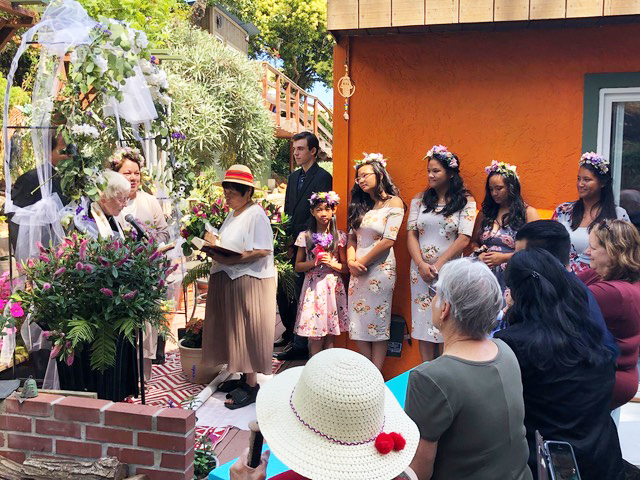
So tight did the group get that Hope officiated at the wedding of the Community Connector assigned to Cayuga. Patti Spaniak, until recently a Cayuga resident, married her longtime partner in the church where the exercise class meets. Another member hosted a bridal shower and made all the flower arrangements.
Sharing a photo of the neighborhood children who stood up at her wedding, Spaniak said, “This is my family.”


